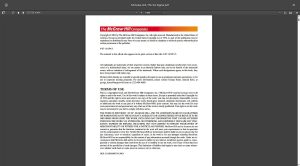The Six Sigma Handbook by Thomas Pyzdek
Check Proof of Content here:
PNJ Sample – The Six Sigma Handbook by Thomas Pyzdek, Watch here:
The most complete Six Sigma manual on the market, updated and enlarged. All of the fundamental statistics and quality improvement tools of the Six Sigma quality management system are covered in this second edition of The Six Sigma Handbook, which has been completely revised and restructured. The book will continue to be the most comprehensive reference to Six Sigma with this new version, which takes into account the advancements in the field over the last few years. This edition’s main modifications include:
- New chapters on DFSS (Design for Six Sigma)
- Minitab, the most popular statistical software for Six Sigma
- Six Sigma philosophy and values
- Flowcharting
- SIPOC Coverage of the core problem-solving technique DMAIC (Define, Measure, Analyze, Improve, Control)
- Dozens of downloadable, customizable Six Sigma work sheets
- New material on important advanced Six Sigma tools such as FMEA (Failure Mode and Effects Analysis)
Editorial Reviews
The statistical tools and managerial data required for a successful Six Sigma implementation
In addition to improving customer happiness and saving billions of dollars, Six Sigma has assisted businesses of all shapes and sizes in raising the caliber of their operations and output. The statistical tools and management processes that form the basis of this ground-breaking new management methodology are covered in the Six Sigma Handbook.
Thomas Pyzdek provides knowledgeable, tried-and-true guidance on applying Six Sigma to drastically reduce expenses, improve bottom line performance, and keep customers. He describes in detail how to implement Six Sigma, including how to organize for it, the different technical skill levels needed, how to choose which employees to train, how to use customer needs to inform strategy and operations, how to manage projects successfully, and much more.
This relevant handbook will assist any firm in achieving the objective of becoming a genuinely world-class operation, regardless of the industry. It is intended for managers and quality professionals who are responsible for adopting or supporting Six Sigma. Among the subjects are:
- How to organize for Six Sigma
- How to use DMAIC to dramatically improve existing products and processes
- How to use Design for Six Sigma (DFSS) and Lean to create new, world-class products and processes
- Complete coverage of all major problem-solving and statistical tools and techniques, from basic to advanced tools such as DOE and logistic regression
- How to use MINITABTM and Microsoft Excel® to perform statistical analyses
- How to avoid common traps and pitfalls during implementation
Many businesses are using the Six Sigma management technique to raise the caliber of their operations and products. The Six Sigma Handbook is the all-inclusive reference manual required for a successful Six Sigma implementation. It explains how to apply the statistical instruments and problem-solving methods that make up Six Sigma successfully across your company. Thomas Pyzdek, a consultant and author, provides the professional advice and direction you require to apply the Six Sigma promise in your business while avoiding the pitfalls and traps that are frequently faced during the process.
You will receive a comprehensive explanation of Six Sigma’s organization, management, and underlying philosophy. Throughout, Pyzdek provides thorough, understandable examples to show you exactly how to utilize this tool. You’ll learn how to lay the foundation for management’s responsibilities and how to best prepare them for the concept of operating a company using tried-and-true scientific methodologies.
This book offers essential information on how to choose which employees to train, what technical skill levels are needed, how to create the best teams, and how to develop effective leadership. Pyzdek also provides guidance on how to manage a project successfully from beginning to end.
- Explains how to make your organization customer-focused–a vital requirement for implementing Six Sigma
- Identifies where specific techniques can–and cannot–be applied in the process
- Includes inspiring and instructive case studies about the success of Six Sigma at Motorola, General Electric, and other companies that have reaped the rewards
Additionally, you will learn when and how to use the more complex Six Sigma subjects that you may employ once your new system is operational, including as response surface methods (RSM), design of experiments (DOE), chi-square contingency tables, and categorical data analysis.
The Six Sigma Handbook is the manual you need to accomplish your objectives if you’re prepared to revolutionize your business, achieve notable improvements in quality, productivity, and sales, and take the required actions to guarantee that your enterprise will thrive in the new global economy.













